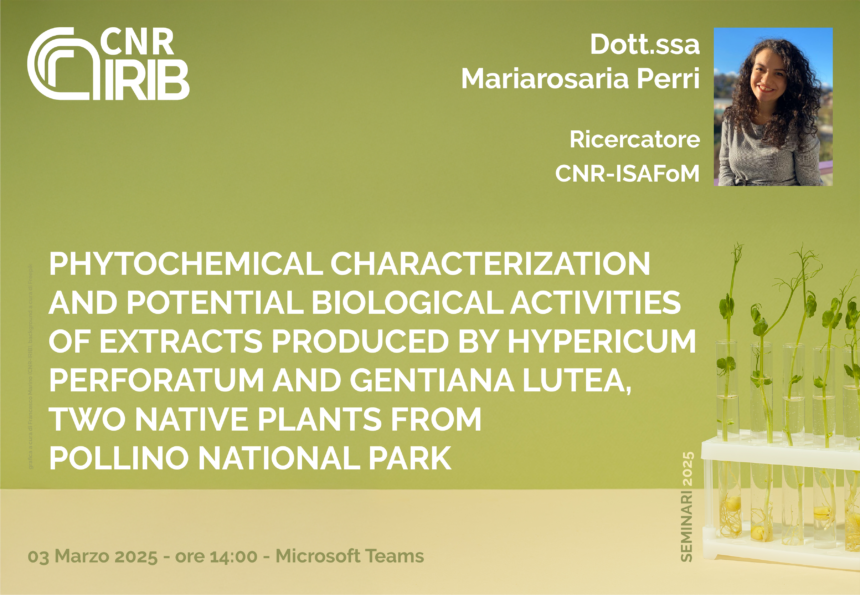Dott.ssa Mariarosaria Perri
Ricercatore CNR-ISAFoM
Phytochemical characterization and potential biological activities of extracts produced by Hypericum perforatum and Gentiana lutea, two native plants from Pollino National Park
03/03/2025 – ore 14:00
Abstract:
Plants have always represented a rich source of phytochemical compounds able to exert a wide range of biological activities. Within the ONFOODS project, two native plants from Pollino National Park, a well-known hotspot of biodiversity in the Mediterranean basin, were investigated. Hypericum perforatum and Gentiana lutea leaves, flowers and fruits, collected at different altitudes, were left to dry in controlled conditions, then pulverized and extracted through hydroalcoholic maceration (EtOH 80%, 24h). The phytochemical profile was investigated through TLC, HPLC and Folin-Ciocalteau method, while the antioxidant potential was determined through ABTS assay and TLC-bioautography DPPH. Then, the most promising extracts were investigated for their anti-adipogenic properties through Red Oil O assay in 3T3-L1 cell model.
The phytochemical pattern, investigated through chromatographic methods, highlighted some qualitative and quantitative differences in H. perforatum and G. lutea tissue extracts. H. perforatum leaves showed the highest amount of phenolic compounds and the best antioxidant potential, followed by flowers and fruits; on the other hand, G. lutea tissues showed a flat trend. In order to evaluate the anti-obesity potential of the plants, hydroalcoholic extracts were previously screened at MTT assay, so extracts, at the highest sub-cytotoxic concentrations, were investigated by means of Red Oil O assay. H. perforatum 40 µg/mL, in particular, was able to reduce lipid droplets formation up to 25%.
In conclusion, the different growth and adaptation strategies implemented by plants under study, suggest that H. perforatum could be considered a valid candidate as ecological bioindicator, a useful tool for monitoring health ecosystem, and a potential anti-obesity agent, which application needs further investigations. On the other hand, the different phytochemical pattern identified in G. lutea species paved the way for future studies.
Per ulteriori informazioni scrivere a seminari.irib@irib.cnr.it


